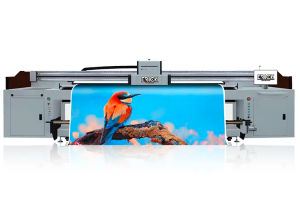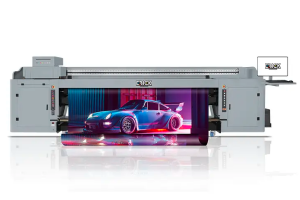In the ever-evolving world of printing technology, UV printers have become a groundbreaking innovation. These printers harness the power of ultraviolet (UV) light to instantly cure ink, producing vibrant, durable, and high-quality prints. Whether you are a professional printer or a business owner, it is crucial to understand the basics of UV printing. This article aims to provide an overview of UV printers, their benefits, applications, and what to consider before purchasing.
A UV printer, also known as a UV inkjet printer, is a device that uses specially designed UV ink that can be cured instantly using UV light. Unlike traditional printers that rely on slow-drying solvent-based or water-based inks, UV printers are able to quickly dry and cure the ink simultaneously, eliminating the need for additional drying time.
One of the significant advantages of a UV printer is its ability to print on a variety of materials. From plastics, metals, glass, ceramics, wood, and even textiles, the versatility of UV printers makes them suitable for a variety of industries. Whether you need to print promotional items, signage, personalized products, packaging, or even fine art prints, UV printers can produce stunning results on virtually any substrate.
The UV curing process offers many advantages. Because UV ink cures immediately when exposed to ultraviolet light, it remains on the surface of the material rather than being absorbed. This prevents ink bleeding and produces crisp, precise and colorful prints. Additionally, UV printing is resistant to fading, moisture, and scratches, making it a durable choice for outdoor applications.
When considering purchasing a UV printer, there are several factors to consider. First, it's crucial to determine the size and quantity you expect to print. UV printers come in a variety of sizes and configurations, from desktop models suitable for small businesses to large industrial machines capable of high-volume production.
Resolution and print speed are other key factors. Higher resolution ensures clearer, more detailed prints, but may reduce print speed. Depending on your specific printing needs, finding the right balance between resolution and speed is crucial.
In addition, it is also crucial to check the compatibility of the UV printer with different materials. Some printers may require pre-treatment or special coatings on certain substrates to ensure optimal adhesion. Understanding these requirements can help you choose the best printer for your intended application.
While UV printers offer exceptional versatility and performance, they also require safety precautions to be considered. Since the UV curing process involves exposing the ink and substrate to UV light, proper safety protocols must be followed. Wearing protective eyewear, ensuring proper ventilation and using UV-resistant materials are necessary steps to safeguard operator health.
In summary, UV printers have revolutionized the printing industry with their ability to instantly cure ink using ultraviolet light. Its exceptional versatility, durability, and vibrant print quality make it a popular choice across industries. Before purchasing a UV printer, it is crucial to evaluate factors such as print size, volume, resolution, speed, material compatibility, and safety requirements. By understanding the fundamentals of UV printing, you can make informed decisions and harness the power of this innovative technology to efficiently meet your printing needs.
Post time: Nov-09-2023







